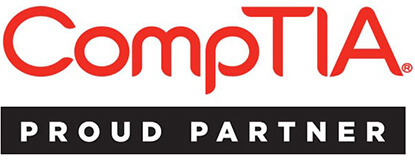Massage Therapy Program Guide
Massage therapists enjoy a fulfilling career that allows them to help others. Whether you want to help people relax or get relief from aches, massage therapy might be right for you.
As a massage therapist, you can work at a variety of places, from spas to medical facilities, or you can run your own business. You have the freedom to decide where you want to take your career. But it all begins with getting the right education and credentials.
What are the requirements for getting into massage therapy school? And, once enrolled, what can you expect from a massage therapy program? Below is some information that can help you take this step toward making your dream career a reality.
Massage therapy school options
Performing an online search can give you insight into the colleges, massage schools, and vocational schools that offer massage therapy programs in your area.
You might be surprised by how many schools there are, but it’s important to do additional research into what each one has to offer. That way, you can be sure you’ll make a decision that will set the best foundation for becoming a massage therapist.
What to look for in a massage therapy program
First, check your state’s requirements for the number of training hours you need to complete to work as a licensed massage therapist. Some programs might consist of 500 hours, while others might be 1,000 hours, as a couple examples. So, when considering schools, narrow your options down to those that will give you the necessary amount of training.
Also, see if your state expects that you take certain courses while studying to become a massage therapist. For example, in addition to learning various massage techniques, studying anatomy and physiology may be mandatory.
Finally, don’t forget about the importance of accreditation, as this can help prove a school will give you high-quality training. Look for accreditation from organizations like:
- Accrediting Bureau of Health Education Schools (ABHES)
- Accrediting Commission of Career Schools and Colleges (ACCSC)
- Accrediting Council for Continuing Education and Training (ACCET)
- Commission on Massage Therapy Accreditation (COMTA)
- National Accrediting Commission of Cosmetology Arts and Sciences (NACCAS)
Massage therapy certifications
Board certification: To differentiate yourself from other massage therapists, you might opt to pursue board certification from the National Certification Board for Therapeutic Massage and Bodywork (NCBTMB). To achieve this, you may need to show proof that you completed the right level of education, and you might need to pass an exam.
Specialty certification: Would you like to work in a specific area of massage therapy? Consider enrolling in a school that can help you get a specialty certificate. Examples include certificates in sports massage, clinical rehabilitative massage, and oncology massage.
License: To work as a massage therapist, you may need to receive licensure or certification from your state or local government. Because requirements can vary from one location to another, it’s wise to find out what’s needed in advance so you’ll know how to start your career without any hiccups. Again, the right school and program can help set you up for success by providing you with top-quality training.
How long are massage therapy programs?
The great news is you don’t have to spend many years completing a massage therapy program, so you might be able to start a new career sooner than you think.
The length of a program will depend on various factors, such as your state’s requirements for training. Generally, an associate’s degree might take around two years to complete, while a diploma might only take several months. But if you decide to attend part-time, that can have an impact on how long it takes to finish a program.
Note: Even after you’ve completed all of your training and become licensed or certified, you might need to complete courses for massage therapy continued education.
How much does massage therapy school cost?
The amount that you’ll spend on a massage therapy program will depend on factors like the school you attend and where it’s located, the length of the program and the number of training hours, and the type of program you enroll in.
For example, if you’re going for an associate’s degree, it might cost you more than $10,000, while a massage therapy certificate or diploma might cost less than $10,000.
Keep in mind that your tuition may not include the cost of textbooks and supplies that are needed to complete all of the coursework.
Massage therapy school entry requirements
What does it take to be eligible for enrollment in a massage therapy school? In addition to filling out an application, requirements might include:
Education
Many schools only require a high school diploma or GED. They might be interested in seeing what classes you took, or they might check your GPA to determine if you’re eligible for their program.
Age
You might need to be at least 18 years old to apply for a massage therapy program.
Background check
Some schools might run a criminal background check after you submit your application.
Physical abilities
Some massage therapy schools might want you to prove that you’re physically capable of moving through the program. You might even be required to provide a note from your doctor stating that you’re healthy enough to complete the training.
Excited to Start Your Massage Therapy Education? IBMC Can Help
At IBMC, we work hard to help students prepare for their massage therapist careers. Contact us to learn about our Therapeutic Massage Diploma, which you can complete in just one year!

